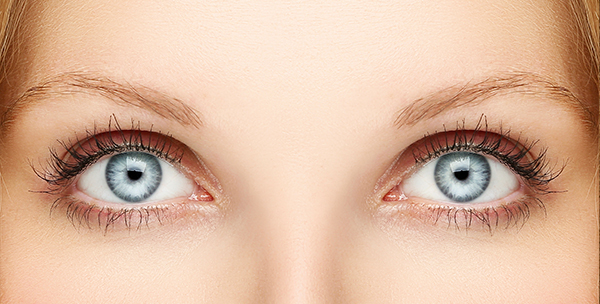
Don’t Be Blind Sided by Glaucoma
A good New Year’s resolution is to keep yourself educated. So, now that 2015 has kicked off, why not start by resolving to educate yourself on the health and safety of your eyes. As we get older, we are affected by ailments out of our control, such as glaucoma – and January just so happens to be Glaucoma Awareness Month.
What is Glaucoma?
The Glaucoma Research Foundation explains that Glaucoma is a complicated disease in which damage to the optic nerve leads to progressive, irreversible vision loss. In fact, it is the second leading cause of blindness. It is typically caused by high amounts pressure inside of your eye—often a result of fluid build-up inside your eye. Typically, but not always, there is no pain involved, the symptoms just gradually set in. If you are not familiar with this condition, understandably, it may sound quite scary. But it is important to remember that, just like with anything there are solutions and ways of treating these symptoms. From using cbg oil, to using eye drops or even opting for laser eye surgery, you’ll be able to find a method that works best for you and this condition. Do some research so you can understand it better and speak to a specialist if this is something you are going through.
Glaucoma Symptoms
There are multiple types of Glaucoma with the two main types being open-angle – which is the most common and accounts for at least 90% of all glaucoma cases – and the less-common, angle-closure. These two types have completely different symptoms as explained via the Mayo Clinic.
Primary open-angle glaucoma begins with gradual loss of peripheral vision and eventually tunnel vision. Angle-closure, however, has several more symptoms including severe eye pain leading to nausea and vomiting, blurred vision (learn more about the causes of blurred vision here https://shopfelixgray.com/blurred-vision) , halos around lights and even reddening of the eye. Depending on if the cause is unknown or if the glaucoma can be traced to a pre-existing condition such as diabetes, a tumor or various eye conditions determines if it is considered primary or secondary, respectively. Open-angle symptoms are often so gradual that you may not notice how badly your vision has deteriorated until it is in advanced stages.
Glaucoma Prevention
According to the CDC there are other common eye disorders similar to glaucoma including Cataracts, Diabetic Retinopathy, Amblyopia, Strabismus, Refractive Errors and Age- Related Macular Degeneration. So be sure to visit your eye doctor at least once annually – early detection is the biggest form of prevention. Symptoms of glaucoma do not typically show up until permanent damage has already been done. If you already wear contacts or glasses, your doctor should be testing you during your regular check-ups. If you have this condition you could be entitled to medical marijuana. If you’re interested to learn how to get a medical marijuana card in Missouri it is well worth researching.
Keep Your Eyes Peeled
Despite symptoms often going undetected until it is too late, certain factors may tip you off to a higher risk of developing glaucoma. Age, family history of glaucoma, and medical conditions such as heart disease, high blood pressure and diabetes are all warning signs that you need to be tested more frequently than others.
Whether or not your at high risk of glaucoma, the same advice applies to everyone: Don’t wait for symptoms to appear.
Sources:
- https://signaturemd.com/concierge-doctors/concierge-medicine-blog/supplements-to-help-preserve-your-vision-and-quality-of-life/ Supplements to Help Preserve Your Vision and Quality of Life
- http://www.glaucoma.org/. Glaucoma Research Foundation.
- http://www.preventblindness.org/sites/default/files/national/news_releases/2015-Eye-Health-and-Safety-Observances-Table.pdf. Prevent Blindness – Our Vision is Vision, Eye Health and Safety Observances.
- http://www.glaucoma.org/news/glaucoma-awareness-month.php. January is Glaucoma Awareness Month.
- http://www.visionsource.com/blog/january-is-glaucoma-awareness-month/. Vision Source.
- http://en.wikipedia.org/wiki/Glaucoma. Glaucoma – Wikipedia.
- http://www.glaucoma.org/glaucoma/. Glaucoma Research Foundation.
- http://www.cdc.gov/visionhealth/basic_information/eye_disorders.htm. CDC Common Eye Disorders.
- http://www.glaucoma.org/glaucoma/types-of-glaucoma.php. Types of Glaucoma.
- http://www.mayoclinic.org/diseases-conditions/glaucoma/basics/symptoms/con-20024042. Mayo Clinic – Diseases and Conditions: Glaucoma.